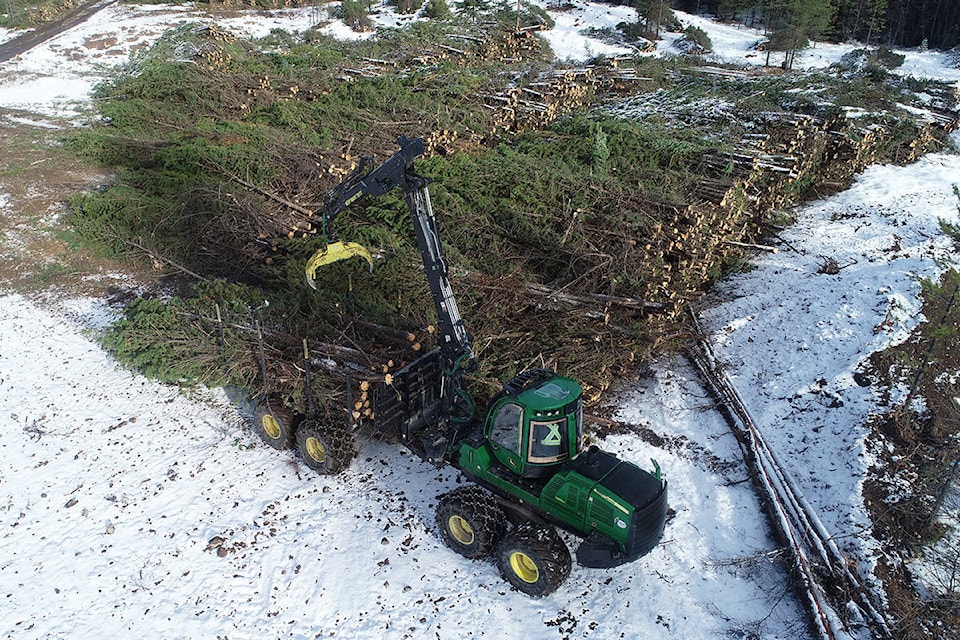Over the last few years, there has been over 300 hectares of forest lands that have been treated for wildfire mitigation, which has been made possible through a provincial wildfire risk funding program.
Much of the work has occurred at the city’s southern forested border, which was recently toured by Mayor Pratt, who has repeatedly raised issues around wildfire mitigation to provincial cabinet ministers and officials in recent years.
“This is an issue that has taken years of lobbying, meetings and hard work,” said Mayor Pratt, in a news release. “We are finally seeing progress with respect to the fuel problem, and I have to thank our partners in government and industry for that. It’s an issue that I have spoken to multiple Ministers about, and to see the great work that has been completed certainly helps me sleep at night.”
Nearly $1 million in grant funding has been awarded to complete the wildfire mitigation work through the Province’s Wildfire Risk Reduction (WRR) Program. Much of the work has been initiated and completed by Paper Excellence through the WRR program, along with support from local staff with the Ministry of Forests, Lands, Natural Resource Operations and Rural Development.
“There has been a lot of really beneficial work completed in our surrounding forests over the last few years, and it’s important that the public realizes how valuable this is to our community,” said Scott Driver, Director of Cranbrook Fire & Emergency Services. “Our drinking water, our trail networks, our community’s identity all depends on having a healthy forest ecosystem.
“We have had to adjust the way we look at forest health, and to do what we need to recognize the values that harvest opportunities can return to our landscape. We are seeing vast tracts of land South of the City being treated under the WRR Program at present and hopefully this will roll into a maintenance model for the future.”
Mayor Pratt agreed.
“This is a significant change to the traditional model, and it has proven to be beneficial both for the landscape and our economy,” said Pratt. “We are really seeing value added forest practices, and that’s good for everyone in the community.”
